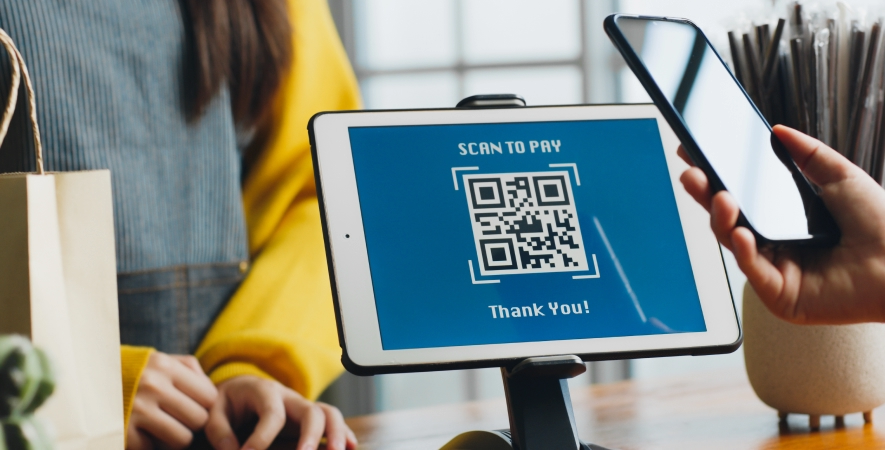In today’s business environment, it’s highly advantageous for merchants to be able to accept payments made via wearable devices and printed or onscreen QR codes. Wearable devices allow consumers to make payments using an accouterment or accessory that they’re already wearing on their person. QR code payments allow people to make payments by scanning a printed or onscreen digital image. In the future, these two methods of payment will account for a growing share of total retail transactions.
Let’s examine these two technologies in further detail:
Payments from wearable devices
Once considered to be entirely within the realm of science fiction, wearable device payments are now a common type of transaction for both consumers and businesses.
Before making a purchase with a wearable device, a user needs to associate that device with a payment method, such as a credit card, a bank account, or a smartphone app. Once this connection has been registered, all the user has to do to complete a transaction is to bring their wearable device in close proximity to a retail terminal.
While smartwatches are the most commonly referenced personal accessory, the term “wearable device” may be used to describe any electronic tool or gadget worn on the body. A number of these can now be utilized to make a purchase. The most widespread forms of wearable payment devices include:
- Bracelets
- Rings
- Keyrings
- Watches
- Wristbands
If businesses have point-of-sale (POS) hardware in place to handle payments made through contactless cards or mobile payment apps, they’ll be able to accept payments made via wearable devices. Examples of this POS hardware include many countertop credit or debit card terminals, portable card readers, and mobile POS systems, including mobile card readers.
In order to communicate with a terminal or card reader, wearable payment devices often use near-field communication (NFC) technology. As a consequence, it can be worthwhile for businesses of all types — from eateries to beauty parlors to bookstores — to confirm whether they can already accept payments from wearable devices.
Like other types of digital payment systems, wearable payments require businesses to pay transaction fees to credit card issuers. The costs of accepting payments stay the same no matter what type of wearable device a consumer uses and are comparable to rates from the best merchant credit card processing firms.
The rising popularity of contactless payment solutions is one of several advantages for businesses that accept wearable payments. The financial industry has been making slow but steady progress toward a cashless society. Currently, 60% of Americans say they either never or rarely use cash.
Customers can pay using wearable devices without taking out their phone, card, or wallet, making this type of cashless payment the most convenient and accessible choice conceivable. They’re able to spend less time in line and fewer moments waiting for their transactions to be processed. As a result, they’re able to conclude their business more rapidly.
In 2020, the market for wearable payment devices was projected to be worth more than $10 billion, and growth in this area is expected to continue for the foreseeable future. Improvements in payment systems’ architecture and security have coincided with its expansion. Wearable devices may soon include additional biometric security capabilities, such as heart rhythm monitors, to aid in the prevention of fraud, even while encryption and tokenization processes remain in use.
The integration of NFC and radio frequency identification (RFID) technology into many common electronic devices has further paved the way for payments by wearable devices. Wearable device payments that are currently made with anything from a wristwatch or fitness tracker to a ring equipped with NFC or RFID technology are changing the landscape of contactless payment options.
In particular, wearable payment systems are revolutionizing payment processing for small businesses. Users making purchases with a wave or touch from their wrist are doing away with the need to carry around cards or cash.
These days, smart wearable devices are used every day by about a billion people throughout the world.
The following are examples of specific types of wearable payment devices:
- Smartwatches: Users of these devices can pay with their wrists thanks to the inclusion of NFC technology.
- Fitness bands: Some fitness bands now include built-in options for payments, allowing users to make purchases on the go.
- Payment rings: These rings, which employ NFC technology to make payments, are great for those who prefer designs with a more minimalist appeal.
In order for wearable payment devices to work, they need to make use of:
- NFC technology: NFC technology allows two electronic devices to communicate with one another when they’re in close proximity. All wearable payment devices are built with this technology in mind.
- Mobile payment apps: Consumers need to first download a mobile app before they can link their payment information to the majority of wearable payment devices. After they’ve done this, consumers can use their devices in many places they shop at.
For merchants, just some of the benefits of accepting payments from wearable devices include:
- Convenience: Wearable payment devices allow customers to make payments without having to pull out their wallets or purses.
- Increased security: By design, wearable payment systems require biometric authentication, such as a fingerprint or face scan, to operate.
- Competitive advantage: Businesses that accept payments via wearable devices are considered innovative and “ahead of the curve” from a technological perspective.
Consider that:
- Roughly 71% of consumers say that cashless transactions are superior to traditional ones.
- From about $19.13 billion in 2022, the market for wearable payment devices is projected to grow to a whopping $138.05 billion by 2030.
- Nearly three-quarters (73%) of American consumers currently use some type of wearable payment device.
- Between the years 2023 and 2030, the market for these devices is anticipated to expand at a compound annual growth rate (CAGR) of 29.8%.
- Consumers have increased their use of contactless payment methods by 59.4% since the outbreak of the Covid-19 pandemic.
- Credit cards and bank drafts are the preferred payment methods for larger service purchases and are used by some 64.2% of customers.
- Approximately 71% of consumers said they intend to keep making purchases using cashless methods of payment.

QR code payments
Quick Response codes, more commonly known as QR codes, are another alternative payment method available to consumers. Compared to other technologies, this payment method is both simple and speedy to process, making it one of the best eCommerce solutions.
QR codes are a novel variation of the 1990s-era matrix barcode. They can be read by consumers with the use of a camera app or a pre-installed QR scanner on their smartphones (in many cases, a smartphone will scan a QR code automatically, without the user needing to activate any function). A QR code is often linked to an online payment form, which can be designed to coordinate with a merchant’s color scheme, logo, and other elements of their corporate identity.
QR codes have been around for nearly three decades. But by the early 2000s, they’d lost much of their appeal to consumers, which may explain why they weren’t seen in the public realm as much. Most of the really useful applications of QR codes fall into the categories of disseminating information, interacting with consumers, and accepting payment for goods and services. The advent of smartphones and their subsequent widespread adoption had the effect of sparking a revival in the use of QR codes.
The two most common types of QR codes are static QR codes and dynamic QR codes. Both types of QR codes store data — usually, a URL that takes a user to a payment website or web application (although QR codes can also store phone numbers, email addresses, calendar data, geolocation data, SMS messages, and plain text).
A company may opt to print and display static QR codes in consumer-accessible locations. With static QR codes, a company can’t make any modifications to the URLs they’re linked to; instead, the websites or web applications activated by those URLs would have to be modified. Thus, with static QR codes, a company typically needs to repeatedly generate and print copies of a new code to use as replacements for the old ones whenever changes or updates are needed.
Dynamic codes, on the other hand, use short URLs that redirect to secondary URLs. It’s these secondary URLs that can be edited as necessary without having to update the QR code itself. This paves the way for the usage of dynamic QR codes in conjunction with time-sensitive or rule-based content and campaigns (such as pricing changes that are tied to limited-time offers).
Creators of dynamic QR codes can also benefit from monitoring and analytics data on how their codes are being used. Therefore, firms that use dynamic QR codes have a considerable edge over their competitors that don't.
Dynamic QR codes can keep track of information like:
- Operating systems used
- Payment locations
- The number of code scans
Having access to this information is helpful for developing new marketing strategies and tracking consumer habits. Thanks to online QR code generators, businesses can easily create either dynamic or static QR codes and accept payment online.
For example, since their implementation in restaurant payment processing systems, QR codes’ popularity has skyrocketed. This is because consumers can now make purchases whenever it’s most convenient for them. For instance, a restaurant might put a code on each table that customers can use to access the menu, place an order, and pay for their meal. During these processes, this table-side ordering system communicates with the restaurant’s POS terminal. The restaurant’s POS system then takes the payments and keeps track of sales.
Recent research has indicated that QR codes are increasingly being used for financial transactions. This is mainly because QR codes can be read without any direct contact being made between the scanning device and the code. Customers can make purchases without physically handing over their credit or debit card to a member of the merchant’s staff, and digital receipts are typically sent once payments are completed. The number of individuals using QR codes as a payment method is expected to expand to over 2.2 billion by 2025, according to projections given by industry experts.
Enter Sekure Payment Experts
Increasing your sales and profits is as simple as offering your customers more choices for payment. Sekure provides merchant services that include both wearable and QR code payments for companies that wish to extend additional payment options to their customers. Get POS equipment compatible with wearable devices from Sekure by emailing info@sekuremerchants.com, chatting with us at www.sekuremerchants.com, or calling at (866) 710-7382.
Categories

